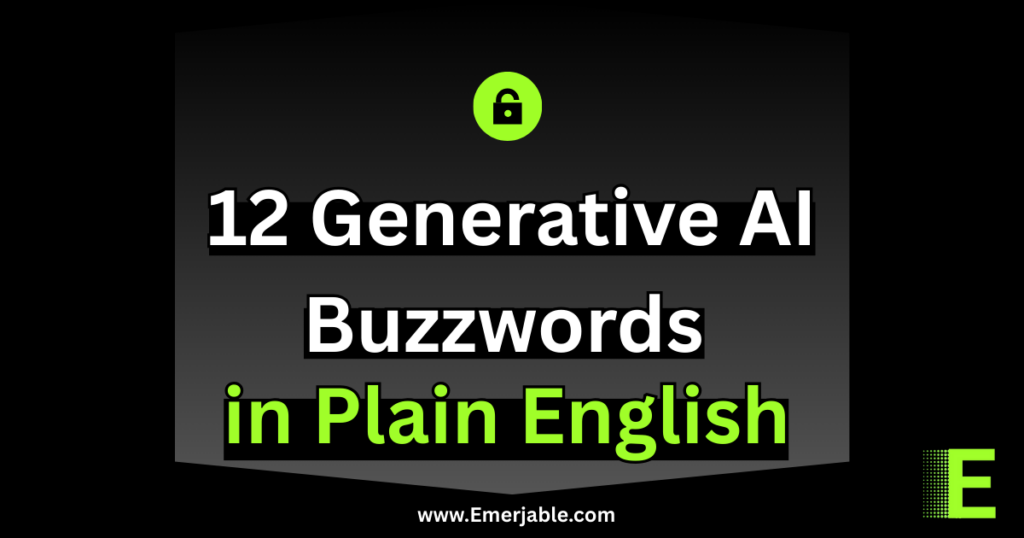Are you exploring the world of Generative AI but getting lost in technical jargon? Don’t worry—this article breaks down 12 essential GenAI terms in a way that’s easy to understand.
Whether you’re a developer, student, content creator, or just AI-curious, these terms will help you build a solid foundation in modern AI tools and concepts.
Let’s get started! 🚀
1. LLM (Large Language Model)
- These are advanced AI models trained on huge amounts of text.
- They can understand and generate human-like text.
- Example: ChatGPT, Claude, and Gemini.
2. Transformers
- A neural network architecture that powers LLMs.
- Uses self-attention mechanisms to understand the sequence and meaning of text.
- Key to how AI understands language and context.
3. Prompt Engineering
- The art of giving precise instructions to AI.
- A well-written prompt can guide AI to give better, more relevant results.
- Combines context, clarity, and constraints.
4. Fine-Tuning
- Adapting a pre-trained model to specific tasks or industries.
- Involves training the model on specialized datasets.
- Improves accuracy for targeted use cases (e.g., legal, medical, customer support).
5. Embeddings
- A way to turn text, images, or data into numbers (vectors).
- Helps AI models compare meaning, find similarities, or search data semantically.
- Core to recommendation engines and search tools.
6. RAG (Retrieval-Augmented Generation)
- Combines search and generation.
- AI first retrieves factual information, then uses it to generate accurate content.
- Useful for chatbots, research assistants, and real-time question answering.
7. Tokens
- Smallest units of text the model reads (words, subwords, or characters).
- Models process input/output as tokens, not plain words.
- More tokens = more memory used.
8. Hallucination
- When AI makes up information that sounds real but isn’t.
- A major challenge in AI reliability.
- Common in content generation and summarization tasks.
9. Zero-shot Learning
- When an AI model completes a task without being trained on that specific task.
- It uses general language understanding to figure out what to do.
- Powerful for flexible, versatile AI systems.
10. Chain-of-Thought
- A prompt technique that guides AI through step-by-step thinking.
- Helps improve reasoning, accuracy, and explainability.
- Great for math problems or logical tasks.
11. Context Window
- The amount of text an AI can process at once.
- Affects how well AI remembers earlier parts of the conversation or document.
- Larger windows = more powerful memory.
12. Temperature
- A setting that controls how creative or focused the AI response is.
- Low temperature = more accurate, focused answers.
- High temperature = more creative, varied responses.
🔍 Why Knowing These GenAI Terms Matters
Understanding these concepts helps you:
- Get better results from tools like ChatGPT or Claude
- Communicate clearly with AI professionals
- Build or fine-tune your own AI apps
- Stay ahead in the fast-moving AI world

